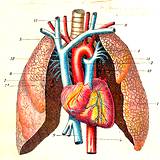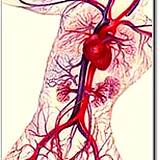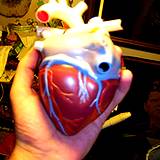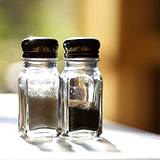|
Grandma's Human Circulatory System Guide
Interference with this system affects cells and can impact energy, strength, and immune system functions . Eating vitalized foods, limiting dietary fat, and receiving adequate exercise are three main contributors to circulatory health. (including Russia and China), circulatory system problems are now the number one cause of death! In the U.S. alone, approximately 30 million people suffer from some form of circulatory distress. The human circulatory system includes:
Transporting nutritional cargo to every cell requires large rivers of blood, traveling in tubes called arteries. In order to personally care for each cell, the rive divides into tiny capillaries that can reach into every crevice of the body. Along with making nutritional deliveries, capillaries also pick up cellular waste products. Veins carry old blood loaded with discarded waste, which is cleansed by kidneys and lungs. After carbon dioxide and other waste gases are exchanged in the lungs for oxygen, the heart recirculates the renewed blood.
How the Human Circulatory System WorksTechnically speaking the human circulatory system is a masterpiece of organic activity. Composed of a network of 60,000 miles of blood vessels and a pint sized, powerhouse pump know as the heart. The heart services more than 2,000 gallons of blood per day, feeding and replenishing other organs and making life possible. In an adult, the heart is normally an 11-ounce, fist-size organ that literally pushes blood through arteries, veins and capillaries. It does this by means of muscular contractions sparked by electrical impulses from the heart's pacemaker (sinoatrial node). All of the cells within each of the chambers magically work on cue. First the right side sends blood to the lungs. There carbon dioxide is removed and oxygen is added, turning the blood a bright red color. Then the blood is pumped to the left side of the heart and sent via the aorta to the rest of the body.
Scarcely four weeks more pass before an intricate network of veins and arteries the size of a pea form and subdivides into a tiny replica of the four chambers that will one day make up the adult heart. As chambers that will one day make up the adult heart remain dependent upon the mother throughout the entire pregnancy, in the later stages the organ becomes strong enough to beat on its own. Even so, until birth the baby is cared for and nourished through the mother's placenta. An umbilical cord provides a supply line that furnishes food and oxygen for the baby and also removes waste. When at last the birthing moment arrives, the baby emerges a separate individual, almost as son as its first cries are sounded, its pulmonary and circulatory systems undergo a change that renders them self-sufficient.
the heart pumps tens of millions of gallons of blood. It is estimated that the amount would easily fill a 24-foot wide cylinder to a height greater than the Empire State Building. Human Circulatory System ProblemsMost circulatory problems are caused by blockage in the artery, which is known as atherosclerosis or hardening of the arteries. No one knows for sure why this happens, but the prevailing theory states that something causes the protective inner lining of an artery wall to be injured. Once impaired, the collagen in the lining is exposed. That, in turn, attracts platelets and toxic substances from the bloodstream, which enter the artery wall. Eventually, the process leads to a buildup of debris, narrowing of the artery and finally, blockage, in return leads to human circulatory system problems. Interestingly enough, although the heart has a continual flow of blood streaming in and out of its chambers, it is unable to take the nourishment it needs from this source. Rather, it must rely o its own minature circulatory system, which branches off from the aorta or main channel. Here tiny but extremely important vessels called coronary arteries provide the means to feed the heart. Like other arteries they are also subject to blockage. Ad herein lies a potential and fairly common tragedy, because when coronary arteries cease to function as they should, the heart is deprived of the oxygen and nutrients it needs. Starved, it becomes damaged and at worst, dies. There are Several Factors that Contribute to Human Circulatory System Problems
human circulatory system problems, all but one, Heredity, can be largely controlled by the way we live and the food we eat. The Human Circulatory System &
|
DISCLAIMER:
The statement's made here have not been approved by the Food and Drug Administration. These statements are not intended to diagnose, treat or cure or prevent any disease. This notice is required by the Federal Food, Drug and Cosmetic Act.
Return from Human Circulatory System to Human Body Systems
Return to Grandma's Herbal Remedies Home








 In the beginning within a month of conception the cluster of cells that will, in the course of time, become a human being, begins throbbing, signaling the development of a primitive heart.
In the beginning within a month of conception the cluster of cells that will, in the course of time, become a human being, begins throbbing, signaling the development of a primitive heart.  Most human circulatory system disease is caused by blockage of an artery, known as atherosclerosis or hardening of the arteries. Fortunately, the risk factors are things that we can influence.
Most human circulatory system disease is caused by blockage of an artery, known as atherosclerosis or hardening of the arteries. Fortunately, the risk factors are things that we can influence. 